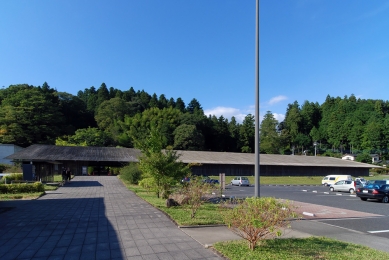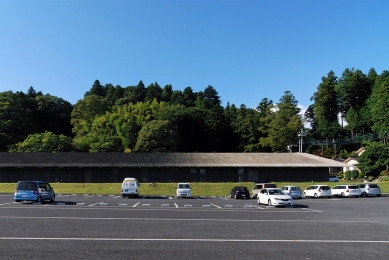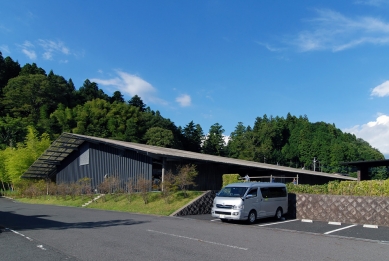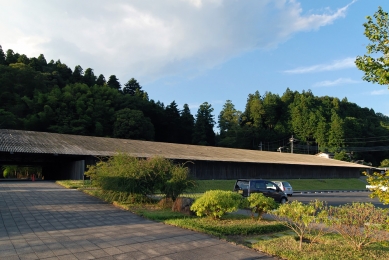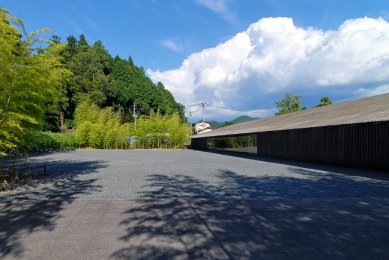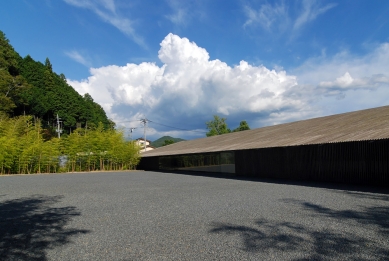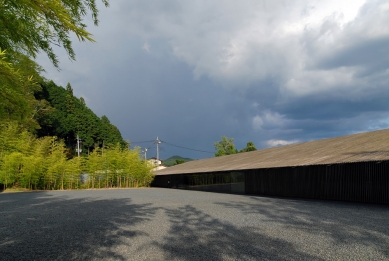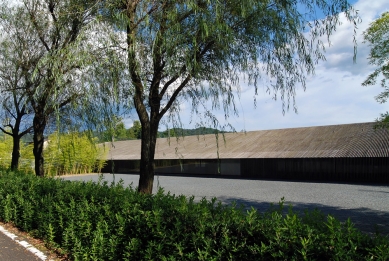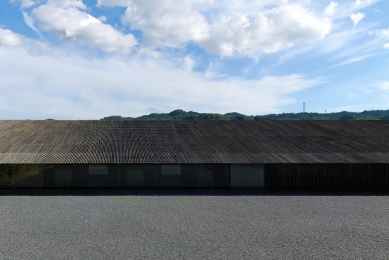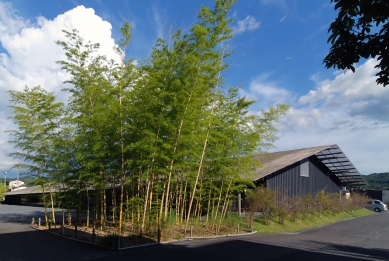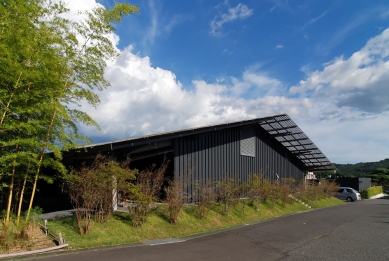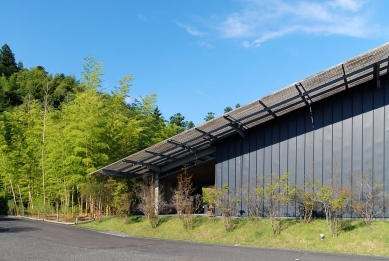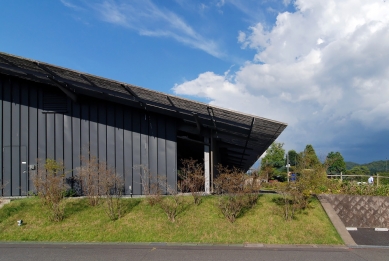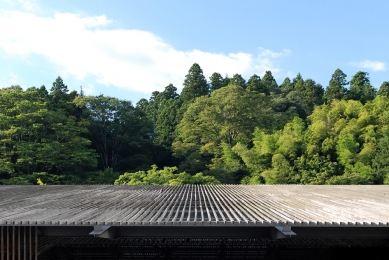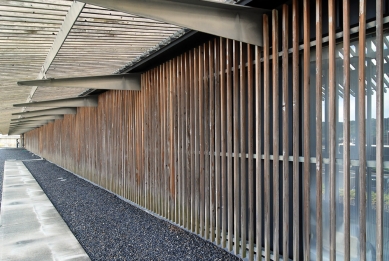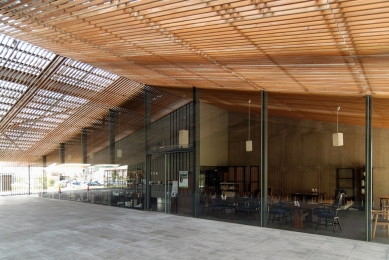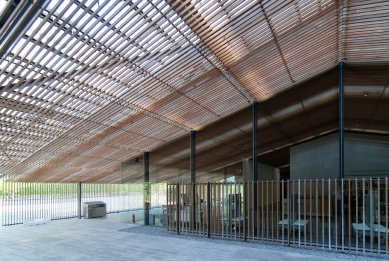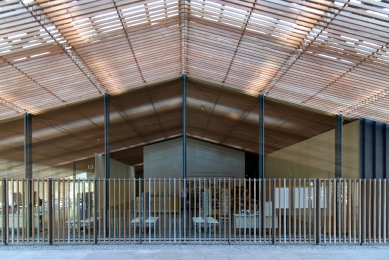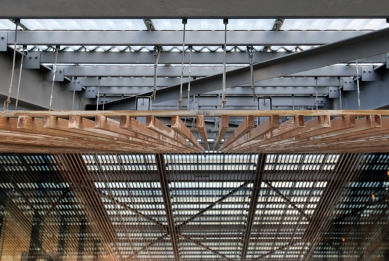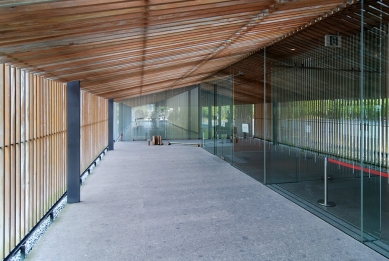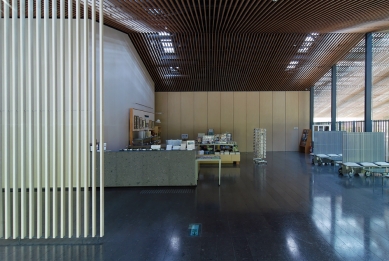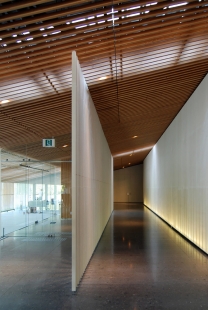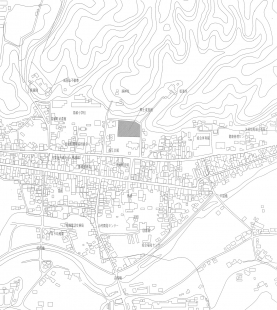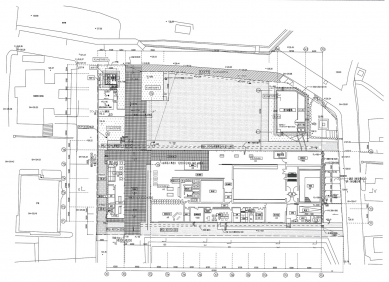
Ando Hiroshige Museum
Nakagawa-machi Bato Hiroshige Museum of Art

Intended to hold a collection of Edo-era artist Ando Hiroshige, this museum in Batoh, Japan was inspired by one of the artist's ink drawings, "Rain on Travelers". Architect Kengo Kuma noticed how the artist used thin lines to portray the rain and carried this technique over into his design; the walls and roof of the simple box composed of a wood lattice over a wood structure.
Hiroshige's work represents ukiyoe, a movement in Japanese art to depict "pictures of the floating world". In other words his prints and paintings attempted to express the ambiguous elements of nature: light, wind, rain, fog. Consequently, Kuma's desire was to create in a building the spirit of the artist's successful depiction of nature.
The simple method of the wood lattice is surprisingly effective, with the change in light and relationship to the nearby landscape modulated by the differing levels of transparency, achieved by varying the wood spacing, throughout the building. It is evident that Kuma uses the structure and lattice as an architectural expression of Hiroshige's depiction of the changing elements of nature.
The museum tells the story of Ando Hiroshige, one of the greatest artists in the Ukiyoe movement.
After the Hanshin earthquke in 1995 some of his masterpieces were found in an abandoned warehouse and donated to the city of Batoh, in the Prefecture of Tochigi, where the people who found them, the Aoki family, are buried.
In a dialogue between art and architecture at a distance, the building seeks to represent Hiroshige's spirit and technical skill, partly by using his compositional and figurative characters.
The museum consists of a wooden structure used to cover the roof and walls, which changes depending on the light. This unusual technical feature, permiting ever-changing, different ways of perceiving the whole, is the product of critical rethinking of the artist's work.
Hiroshige's Ukiyoe works express a view of nature in which elements such a light, wind, rain and fog change both colour and shape over time.
In this project Kuma has expressed the basic pillars of Hiroshige's art in the architectural idiom: the museum becomes a mirror of the artist's soul, and its configuration metaphorically links the nature of the container to the meaning of its content.
Hiroshige's work represents ukiyoe, a movement in Japanese art to depict "pictures of the floating world". In other words his prints and paintings attempted to express the ambiguous elements of nature: light, wind, rain, fog. Consequently, Kuma's desire was to create in a building the spirit of the artist's successful depiction of nature.
The simple method of the wood lattice is surprisingly effective, with the change in light and relationship to the nearby landscape modulated by the differing levels of transparency, achieved by varying the wood spacing, throughout the building. It is evident that Kuma uses the structure and lattice as an architectural expression of Hiroshige's depiction of the changing elements of nature.
 |
The museum tells the story of Ando Hiroshige, one of the greatest artists in the Ukiyoe movement.
After the Hanshin earthquke in 1995 some of his masterpieces were found in an abandoned warehouse and donated to the city of Batoh, in the Prefecture of Tochigi, where the people who found them, the Aoki family, are buried.
In a dialogue between art and architecture at a distance, the building seeks to represent Hiroshige's spirit and technical skill, partly by using his compositional and figurative characters.
The museum consists of a wooden structure used to cover the roof and walls, which changes depending on the light. This unusual technical feature, permiting ever-changing, different ways of perceiving the whole, is the product of critical rethinking of the artist's work.
Hiroshige's Ukiyoe works express a view of nature in which elements such a light, wind, rain and fog change both colour and shape over time.
In this project Kuma has expressed the basic pillars of Hiroshige's art in the architectural idiom: the museum becomes a mirror of the artist's soul, and its configuration metaphorically links the nature of the container to the meaning of its content.
Alini Luigi: Kengo Kuma. Opere e progetti, Mondadori Electa, Miláno 2005, p.151
1 comment
add comment
Subject
Author
Date
tradice a soucasnost
lulu
08.03.13 09:35
show all comments


